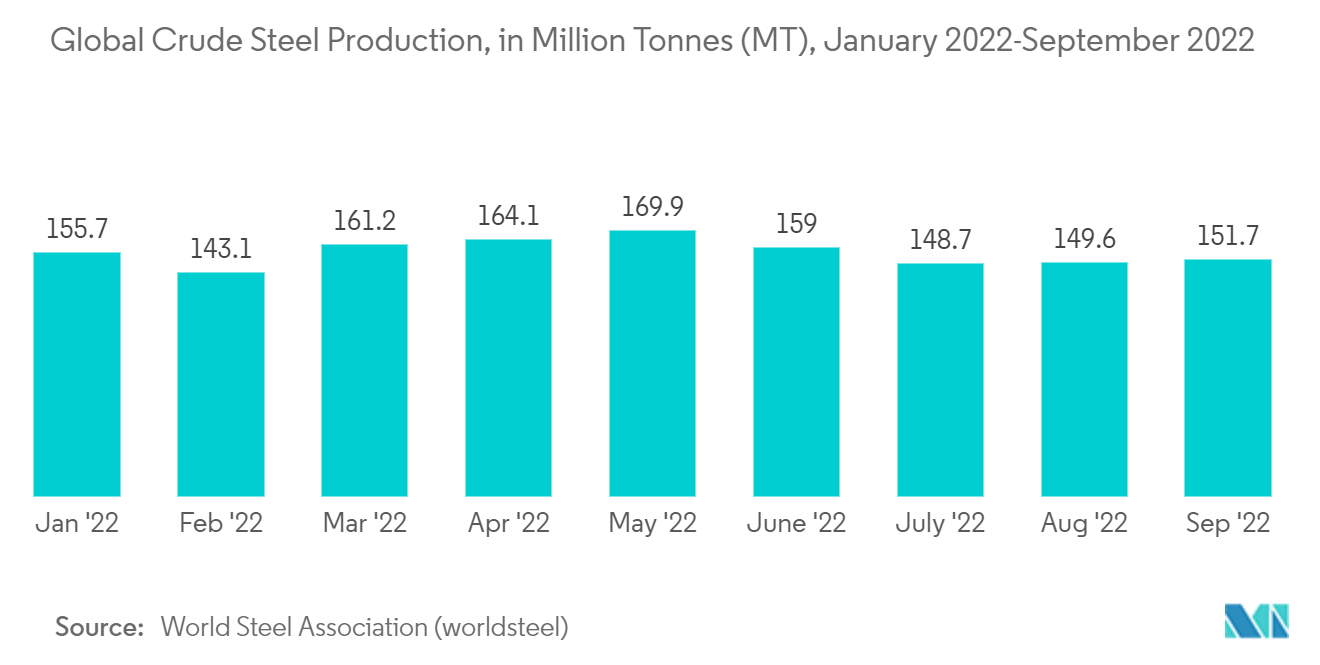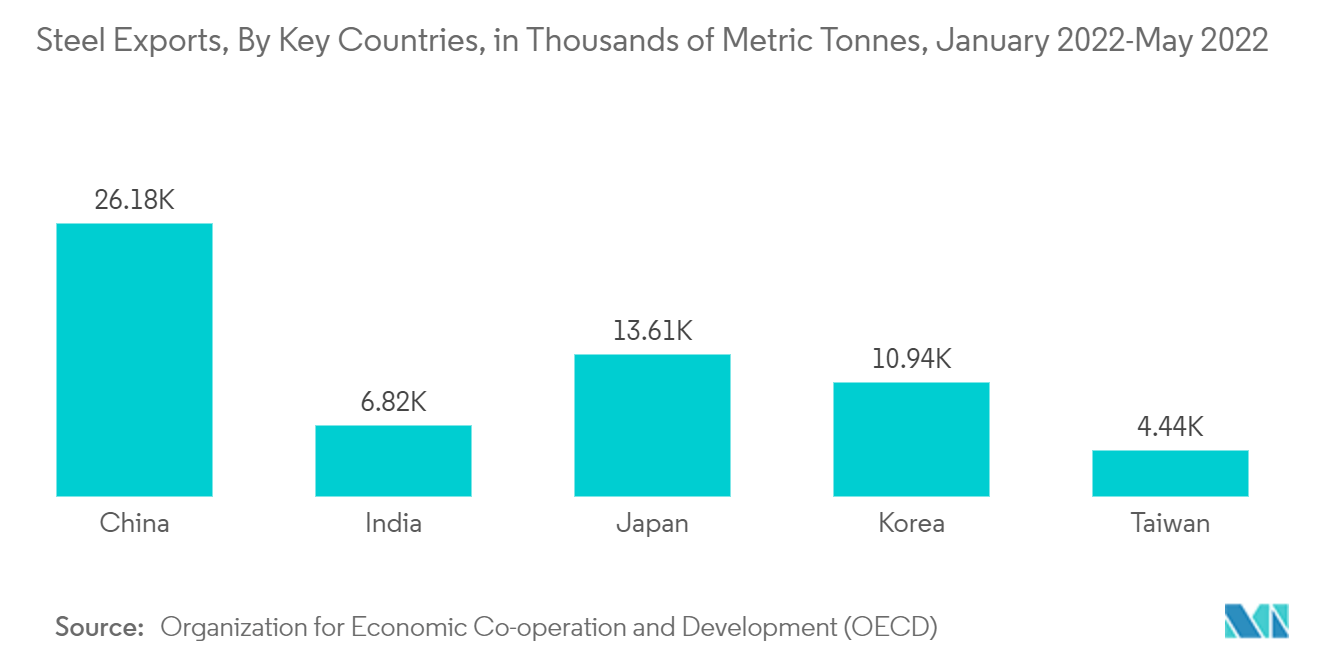Market Trends of Global Steel Sections Industry
This section covers the major market trends shaping the Steel Sections Market according to our research experts:
Increased Demand for Steel Products
Higher energy and commodity prices, particularly for raw materials for steel production, will have a global impact, as will continued supply chain disruptions, which plagued the global steel industry even before the war. Furthermore, increased financial market volatility and uncertainty will deter investment. According to World Steel Association (Worldsteel) data, global steel production fell 5.1% year on year (y-o-y) to 162.7 million tonnes in April 2022. Since 2021, global output has been declining as China, which accounts for more than half of the output among the 64 countries whose data is used, has tended to overshoot.
Despite ongoing supply chain issues and COVID waves, recovery from the pandemic shock was stronger than expected in many regions in 2021. However, a sharper-than-expected slowdown in China resulted in lower global steel demand growth in 2021 and the outlook for 2023 is highly uncertain. The war in Ukraine and rising inflation have shaken confidence in the post-pandemic continued and stable growth environment. The magnitude of the conflict's impact will differ depending on the region's direct trade and financial exposure to Russia and Ukraine. Due to its reliance on Russian energy and geographic proximity to the conflict area, the EU suffers an immediate and devastating impact.
Steel demand in Japan has slowed as rising material costs and labor shortages have caused construction delays. Steel demand, on the other hand, will continue its moderate recovery in 2022, thanks to the non-residential construction and machinery sectors. Steel demand will continue to recover in 2023 as the automotive industry grows and supply chain constraints ease. Steel demand in South Korea has deteriorated and is expected to fall in 2022 due to reduced facility investment and construction. The alleviation of auto supply chain bottlenecks and an improved outlook for ship deliveries and construction will drive recovery in 2023. However, due to the weak global economy, the recovery of the manufacturing industry will be limited.

Huge Demand of Steel Sections in Asia-Pacific
Steel demand is expected to rise by 10% through 2022-2023, owing to the government's continued emphasis on road, rail, port, and airport construction. Steel exports from India will remain strong in the coming months as higher prices and regional demand encourage steelmakers to divert a portion of their output to exports. Because of the Russia-Ukraine war, input costs have risen, and businesses have been wary of higher raw material costs eroding their margins. Steel prices are no strangers to this occurrence.
The China Iron and Steel Association (CISA) recently warned that China's steel producers are facing their most difficult period yet, due to a slower-than-expected recovery in steel demand and mounting pressure from high production costs. Noting that many steel mill profit margins fell significantly in the first half of this year, the association conducted a study of the industry and identified the key points its members will need to focus on. According to the association, the total gross profits of CISA's 90 key steel mill members fell by 63.4% year on year to Yuan 93.6 billion (USD 13.9 billion) from January 2022 to July 2022, owing primarily to higher raw material costs and falling steel prices from depressed steel demand.


